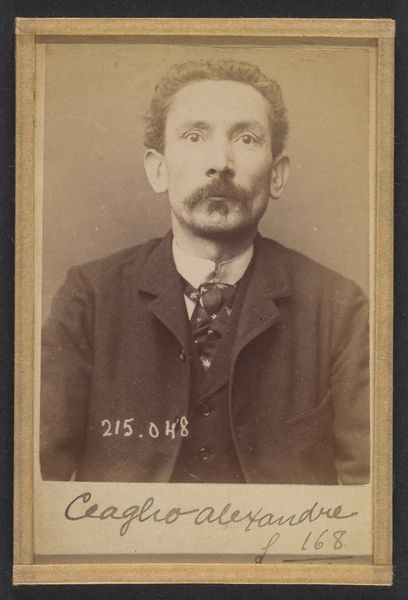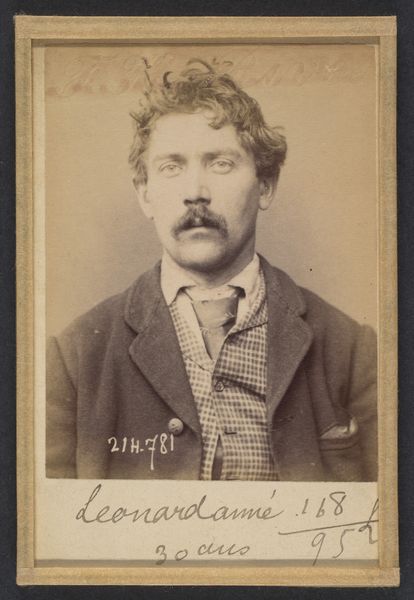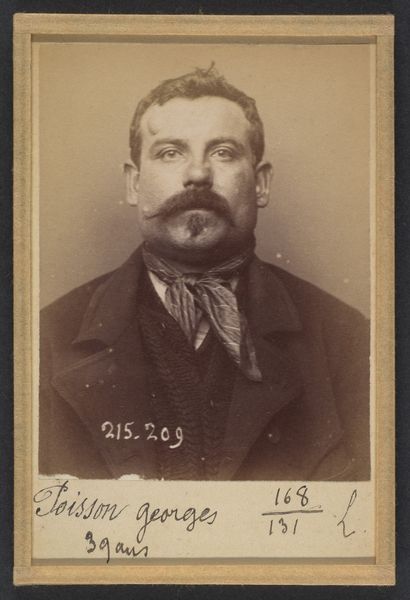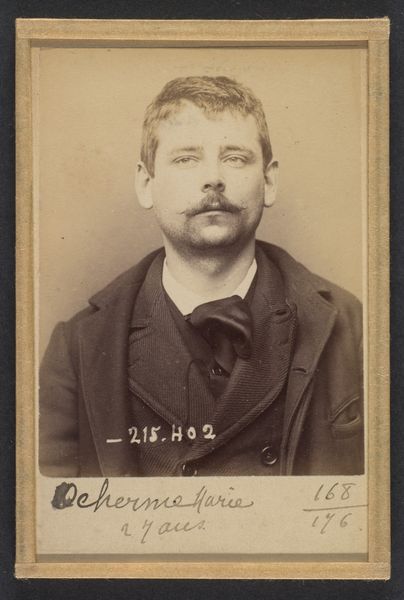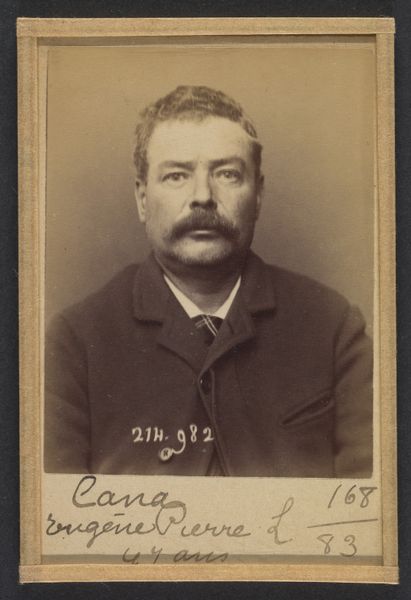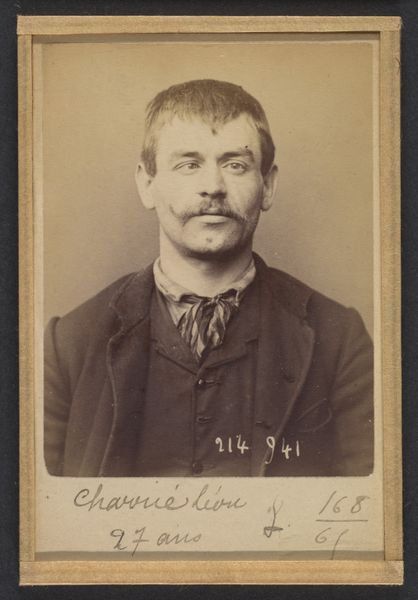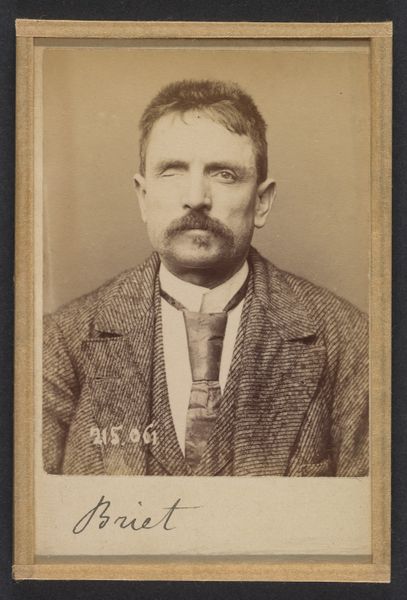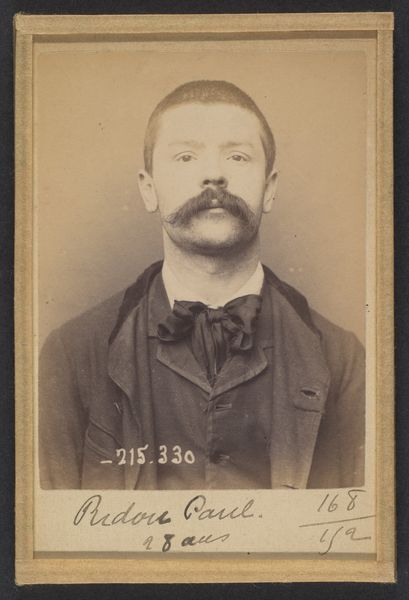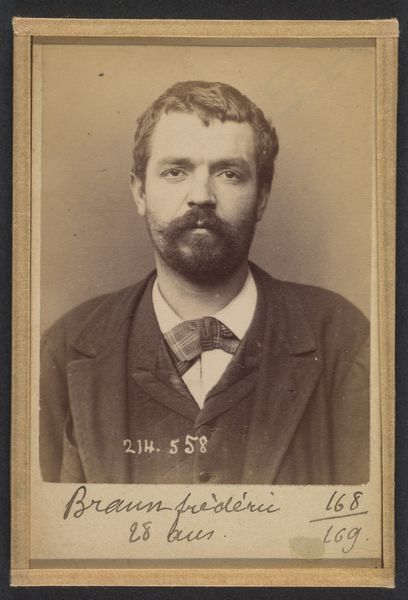
Parisot. Louis. 37 ans, né à Saint-Avalet (Moselle). Employé au "Petit Journal". Anarchiste. 2/3/94. 1894
0:00
0:00
photography, gelatin-silver-print
#
portrait
#
portrait
#
street-photography
#
photography
#
gelatin-silver-print
#
history-painting
#
realism
Dimensions: 10.5 x 7 x 0.5 cm (4 1/8 x 2 3/4 x 3/16 in.) each
Copyright: Public Domain
Editor: So, here we have Alphonse Bertillon's gelatin silver print from 1894, "Parisot. Louis. 37 ans..." It's a mugshot, basically. It's stark, almost confrontational, and the subject seems caught between defiance and resignation. I find it hauntingly compelling. How do you interpret this work within its historical context? Curator: This isn't simply a photograph, but a document within the history of social control. Bertillon was a pioneer of forensic photography, developing the "portrait parlé"—a systematic way of identifying and cataloging criminals. He strived to standardize physical description, thereby reinforcing and reproducing hierarchies within French society. Look at how the gaze is directed straight at the viewer—an attempt to remove any individual agency, turning Parisot into an object of the state. How does that understanding affect your interpretation of the subject’s expression? Editor: It does add a chilling layer. Knowing Bertillon's system aimed to strip away individuality... it makes me see even more defiance in Parisot’s eyes. He is named as an anarchist, after all. Do you think these kinds of portraits ended up impacting how marginalized people were treated legally? Curator: Absolutely. Bertillon's methods gained traction internationally, impacting police practices for decades. The adoption of his anthropometric techniques, the measurements and descriptions, further marginalized individuals, particularly those already under suspicion, perpetuating biased perceptions of criminality based on socio-economic status. The public perception was also molded by it. Does this portrait feel scientific to you, even? Editor: I can see that. Knowing the history behind it, it feels less like objective observation and more like… state-sponsored framing. I hadn't considered the political impact of early photography like this before. Curator: Exactly. It's a potent example of how art and visual media are never truly neutral; they reflect, and actively shape, societal structures. Editor: Thanks so much. I never thought I could get a sense of a legal and public policy from a photographic artwork!
Comments
No comments
Be the first to comment and join the conversation on the ultimate creative platform.
